A colourful parade
of some of the world’s greatest athletes closed the
Olympic Games on August 1st, 1976, leaving Montrealers with
a lingering sense of decline. The years that followed have
often been seen as the city’s decline from greatness.
But is this narrative correct? It has almost become received
wisdom by some Montrealers and others that it often can seem
self- evident. However, the notion of when the decline started,
or if it even ‘is’ a decline, needs to be re-examined
in the light of the 21st century. Montreal remains one of
the great cities of the world, and stories of Montreal’s
demise are greatly exaggerated.
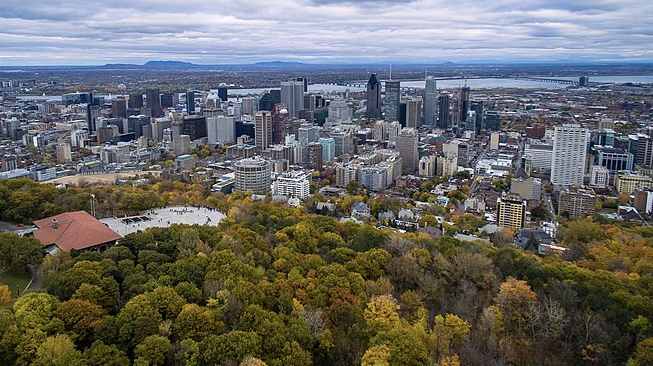
Many people, certainly
in my generation and older (Gen X and Baby Boom) put 1976
as the ‘beginning of the end’ of Montreal. Is
it true? Well, 1976 was the end of an era of greatness in
Montreal. It is also easily demarcated: Montreal hosted the
summer Olympic Games that year and in fact, it has been the
only time in Canada’s history that the games were hosted
in this country. This ‘decade of greatness’ from
the World Exposition of 1967 (colloquially known as Expo 67
– also hosted in Montreal) to the Olympics in 1976 fits
well in our minds, since a century is impossible for any individual
to imagine. There was also the build-up to Expo 67 throughout
the 1960s – Drapeau’s great reforms and other
social changes which amounted to the modernization of Montreal.
The best example of this is the Metro, which remains as a
beautiful monument to modernism as well as a practical and
fast way to get around the city. There is also the skyline
we know and love now which was erected in the 60s, most notably
Place Ville Marie – with its signature rotating light,
which can be seen in the night sky for miles around. And finally,
Montreal was still Canada’s largest and most important
city through that era and had been since colonial times. Today,
it has been supplanted as the country’s metropole by
Toronto, whose population surpassed Montreal’s some
time in the 1980s.
On the other hand
the prior analysis, while true in many respects, misses some
deeper key facts. For one thing, the alleged decline is only
a recent iteration in a city that has been evolving for centuries.
As well, there is a difference between great cities and good
cities: all great cities go through ups and downs, but retain
a central characteristic of greatness. We can use the example
of New York to illustrate this: it was significantly depressed
in the 1970s, yet it maintained a core of greatness and has
clearly bounced back since then. Montreal has also bounced
back, in this century. Not all cities bounce back, for example
Detroit (all due respect to Detroiters) has never recovered
from the difficulties of the 1960s and 1970s.
Perhaps another
way to gauge the transition from Montreal to Toronto would
be sports teams and results. In 1966, taking the sports leagues
that operate both in the US and in Canada, Montreal and Toronto
only had hockey teams. Then, Montreal gained Canada’s
first major league baseball team in 1967 – the Expos.
So here this fits with the era ‘Montreal greatness,’
it was ‘ahead’ 2-1 on Big League teams. However,
in 1977 Toronto obtained a major league baseball team –
the Blue Jays. So the cities were again ‘equal’.
It should also be noted that it was almost exactly around
this time that the populations of the two cities converged.
In other words: Montreal had been more populated, and was
overtaken in the late 70s, early 80s by Toronto. And for a
time the two cities were quite similar in size, until Toronto
grew so much more that it became the much larger metropolis
that it is today. In any case, through that period the Montreal
Canadians had one of their great Stanley Cup winning streaks,
taking 10 Cups from 1965 to 1979 – which added to Montreal's
er of greatness of that time. Since that time however, the
Habs have only won only two Stanley Cups: one in the 80s and
one in the 90s. In this century, none. As well, in 2007 Montreal
lost our beloved Expos when they went to Washington and became
the Nationals. At the same time, the Toronto Blue Jays won
the World Series twice in early 1990s, and by 1995 Toronto
had an NBA team, the Raptors, which eventually won the championship
in 2019. So, in terms of sports teams and victories, we can
definitely see a reversal of fortune favouring Toronto over
Montreal both in number of teams as well as championship victories.
Moving forward
in time, in this century, Montreal has now ended the era of
slow growth; it is now growing at a healthy pace and construction
is booming. Putting aside the recent problems of Covid, in
the last decade or so there has been a real sense of positivity
that did not exist prior to the turn of the century. Many
who can remember the 1990s in Montreal had a palpable sense
that we were living in a city that had undergone a period
of greatness and then a kind of shock. Sort of like the morning
after a huge party – the tables covered with messes
of bottles and half eaten cake, the ashtrays overflowing,
the floors sticky, as people stumble around, hungover.
One way to look
at it is that Montreal has come back into its own in a different
way: as the metropole for Quebec – repositioning itself
as the centre of the ‘French Fact’ in America,
while also being cosmopolitan and international in nature.
Just to be clear, Quebec City is truly the centre of ‘French’
North America – geographically, culturally, and even
politically – as the political capital of Quebec (as
the sign says when you drive in: Bienvenue à la Capitale
nationale), which was the case in the 20th century and it
still is today. However: for most of Montreal’s history,
we had not viewed ourselves exactly as a ‘French’
city, this started to occur in the second half of the 20th
century. Even now, the claim that Montreal is a French-speaking
city is quite tenuous, given its complex linguistic mix that
truly demarcates it and renders it unique, in America at least.
But the French language has gradually become the first language
of integration for most immigrants, and that is a relatively
recent phenomenon. Until the 1970s, the vast majority of immigrants
sent their children to English language schools, and that
trend reversed itself in the 1970s (by force of law: Bill
101). The effect of all these changes has been for the French
language to gain prominence. This has not been an easy process,
but it has basically been accepted in the 21st century, while
at the end of the 20th, it still had not been.
Despite the fact
that it is now the country’s second largest city, Greater
Montreal still grew through the entire period in question,
though more slowly than other places, most notably Greater
Toronto. And most importantly: the things that make Montreal
a great city are not just quantitative but qualitative in
nature. There is long list here: bagels, the unique linguistic
qualities of the city, the Habs, among many other things.
More on that later on.
But the real
start date of the transition of Canada’s metropolitan
centre moving from Montreal to Toronto should really be 1965,
with the inauguration of our current Canadian flag.
What does the
change in flag indicate?
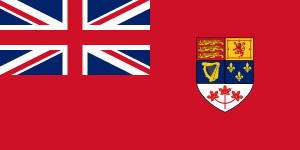 For
almost all of our history, and to this day, the main foreign
security threat to Canada, of course, has been the United
States (post 1776). In the 19th century there was a cold war
between the UK and the US, which we can still see in the leftover
massive military infrastructure in this country: The Citadel
in Quebec City, as well as the stone walls around that city;
Fort Henry in Kingston, Ont.; the Rideau Canal. All were built
to counter an American invasion, following the War of 1812.
For
almost all of our history, and to this day, the main foreign
security threat to Canada, of course, has been the United
States (post 1776). In the 19th century there was a cold war
between the UK and the US, which we can still see in the leftover
massive military infrastructure in this country: The Citadel
in Quebec City, as well as the stone walls around that city;
Fort Henry in Kingston, Ont.; the Rideau Canal. All were built
to counter an American invasion, following the War of 1812. So our security was guaranteed by a foreign power: the UK.
During this period, separatist sentiment would have existed
among some in French Canada. But it had to be subsumed by
the geopolitical reality: protection from the US by the British.
This was grudgingly accepted by most French Canadians through
the rise and peak of the British Empire through the 19th and
20th centuries.
So our security was guaranteed by a foreign power: the UK.
During this period, separatist sentiment would have existed
among some in French Canada. But it had to be subsumed by
the geopolitical reality: protection from the US by the British.
This was grudgingly accepted by most French Canadians through
the rise and peak of the British Empire through the 19th and
20th centuries.
However, after
WW2 the British Empire fell apart, exhausted from two gruelling
wars with Germany and other powers, and the new world power
became the United States (at least for the Free World, of
which we form a part). British colonies all over the world
gained independence during this period: in Africa, the Caribbean,
and most notably the Indian sub-continent. Canada, like Australia
and New Zealand, had already gained political independence
in the 19th century, in our case, in 1867. But our relationship
with the UK had remained, hence our former flag, the famous
'Red Ensign,' which contained the Union Jack.
In any case, this
geopolitical ‘changing of the guard’ from the
UK to the US left a kind of ‘security vacuum,’
and I believe led to a crisis of identity in Canada. During
this process, the obvious linguistic duality was questioned,
as well as the deference to English as a language over French.
In the 19th and
20th centuries in Quebec, ‘bilingualism’ (which
was guaranteed in Quebec in the BNA Act of 1867) was frequently
a cover for Anglophones to simply be able to live their lives
entirely in English. This was the leftover remnants of a colonial
system, and it is this Quebec (briefly in Saint Jean sur Richelieu,
then settling in Montreal) that my grandparents and my mother
immigrated to in the mid 1950s.
So as the British
Empire fell away, in the security vacuum a sentiment began
to develop in Quebec towards full independence. Again, and
to be clear: this was simply the allowance of expression of
a sentiment that had existed in the French Canadian population
for centuries. Originally, it had been channelled into ‘Canadian’
nationalism: O Canada. Our national anthem, was originally
written in French by Calixa Lavalée. But in this Post
World War II era, where everything was up for grabs, the nationalistic
focus moved towards a bolder goal: creating a new independent
Quebec state. Most importantly: there were no longer any colonial
masters in London to say otherwise. So this new ‘Quebec’
brand of nationalism began to gain ground.
In Quebec a distinction
is often drawn between ‘soft’ and ‘hard’
nationalists. A soft nationalist is a person who sees him
or herself as primarily a Quebecer (usually a Québécois)
but also believes that Quebec can prosper within a loose federation
called Canada. While ‘hard’ nationalists do not
care about Canada, or any other supra-national, non-French
dominated state. They want their French majority country,
period, and never wanted anything to do with the British or
Canadian incarnations that have existed since the British
conquest of 1763.
So to maintain
Canada from dissolution, the goal (in Quebec at least) became
a rearguard action: attempt to make the Canadian nation just
attractive enough to the soft nationalists. As to the hard
nationalists, anyone who knows anything about that population
knows that it is (and has always been) impossible to make
anything other than a French dominated, independent state
attractive to them. So anyone concerned about the integrity
of Canada knows not to bother with them, it is (and was then
as well) impossible to make Canada attractive to them. In
effect, it became a battle for the hearts and minds of French
Canadians – specifically those who were ‘on the
fence.’ So this brings us back to the flag: the idea
of changing it is an example of this attempt to say to those
French Canadian soft nationalists: “Hey, Canada is a
welcome place for you, it is flexible enough to adapt to your
concerns.” What better way to signal to them that this
was a serious gesture than to change the primary national
symbol, the flag?
As a result, in
1965 we got our new flag, which was scrubbed of the most obvious
connection to the faltering British Empire: the Union Jack.
We should pause here to note that our brother countries in
the southern hemisphere, Australia and New Zealand, have not
been able to do this ‘modernization,’ despite
a number of attempts, including some by referenda. Their flags
maintain the Union Jack.
What is the difference
then? Why were we able to carve out a more unique space for
ourselves to show the rest of the world, while the Australians
and New Zealanders have not been able to? Well, obviously
one could name many differences between Canada and those two
countries. But one obvious difference jumps out: neither country
is officially bilingual, neither has a large minority population
who speak a language other than English, and who have rarely
felt any real connection to the UK. Quite the contrary: in
many instances French Canadians are outright hostile to the
British monarchy. Another factor is that the population is
centred in one of the provinces, making the threat of separatism
even more real. If French Canadians were more dispersed across
the country, it would be a much less of a threat to the integrity
of the country. For evidence of this: look at Black American
nationalists/separatists such as Louis Farrakhan: they were
faced with the obvious problem that Blacks are more or less
evenly distributed throughout the country. So in Canada, this
concentration of the minority population in one of the provinces
creates the possibility of a separatist threat, and thus a
battle for the hearts and minds of the French speaking population
of Quebec, and the new flag of 1965 was a turning point at
that signalling process.
So 1965 may well
have been the start of the great transformation that many
of us have seen throughout our lives: that of Montreal passing
the baton to Toronto in the role of the country’s metropole,
and the change of focus in Montreal to becoming economic,
cultural and spiritual centre of Quebec -- and not Canada.
And the simultaneous transformation of Canada from being integrated
into the world via the British Empire (which had never sat
well with the country’s francophone population) to being
integrated into the post-colonial world as a ‘middle
power,’ trying, with some success, to chart our own
course in the world.
There are other
reasons as well, some much more mundane for Montreal repositioning
itself in relation to the rest of the country and the world.
For example, when my mother and grandparents arrived in Montreal,
in the 1950s, they arrived by boat. My mother described in
great detail her memories of the crossing. Even to a boy hearing
the stories in the 70s and 80s it sounded like the stuff of
something from a different century. She recalled when land
was sighted, the joy that went through the ship; the journey
up the mighty Saint Lawrence, which took days, and landing
at the Port of Montreal. Almost nobody immigrates by boat
now. So it stands to reason that Montreal’s position
as a deep-water international port is no longer as important
in an era when almost all immigrants arrive in Canada by air.
Even Montreal’s significance as a port city has not
kept pace with other cities – it is now second in Canada
to Vancouver – despite Vancouver being a smaller city
than Montreal. Some of that is obviously due to the rise in
trade with East Asia (Trans-Pacific trade is now greater than
Trans-Atlantic trade). Another factor is the rise of container
shipping as well as increased vessel size: the largest ships
can’t make it up the Saint Lawrence, and containers
can often be landed at other ports, in the United States,
and shipped via rail or even truck. And with greater economic
integration with the United States, notably through the 1989
Free Trade Agreement, that became even easier to do. These
are mundane factors, but they do speak to the diminishing
of importance of Montreal overall, relative to other cities.
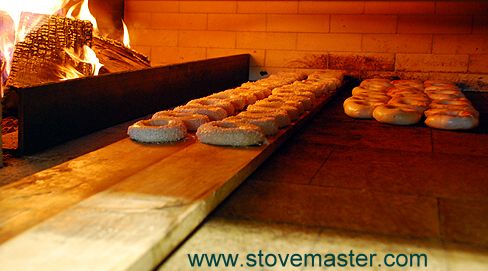 However,
all of the above are measurable, quantitative and factual.
As already mentioned, the greatness of Montreal is much more
qualitative than quantitative. How do we put a number on the
taste of a bagel, freshly hot to the point of almost burning
your tongue? Or on the pleasure it gives me every time I walk
through a typical Montreal alleyway, replete with vegetable
gardens in the yards and colourful clothes lines? The cramped
and intimate nature of those alleyways fascinates me.
However,
all of the above are measurable, quantitative and factual.
As already mentioned, the greatness of Montreal is much more
qualitative than quantitative. How do we put a number on the
taste of a bagel, freshly hot to the point of almost burning
your tongue? Or on the pleasure it gives me every time I walk
through a typical Montreal alleyway, replete with vegetable
gardens in the yards and colourful clothes lines? The cramped
and intimate nature of those alleyways fascinates me. 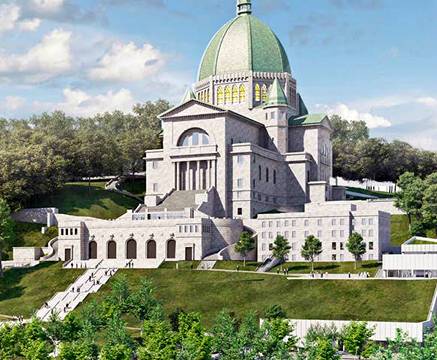 Or
the awe that comes with spending time at St Joseph’s
Oratory? For me personally, I can still remember the first
time I visited the Oratory, at about age 10. One of the most
striking things I remember was walking into the room with
the thousands of canes and crutches hanging on the wall, and
my friend’s mother pointing at them and saying: “See
all those? They were left there after people came here to
be cured by the great Brother André.”’
And now, as an adult, I know there must be some reasonable
explanation for that, that it cannot have been his wizardry
as a medicine man, but there was something unshakeable about
it, and it seems connected to that space and building. And
even if I were to learn some rational explanation for his
curing of all those people, I doubt it would shake the sense
of awe I still feel when I walk into that room. The legend
of Brother André and the Oratory has a kind of
Or
the awe that comes with spending time at St Joseph’s
Oratory? For me personally, I can still remember the first
time I visited the Oratory, at about age 10. One of the most
striking things I remember was walking into the room with
the thousands of canes and crutches hanging on the wall, and
my friend’s mother pointing at them and saying: “See
all those? They were left there after people came here to
be cured by the great Brother André.”’
And now, as an adult, I know there must be some reasonable
explanation for that, that it cannot have been his wizardry
as a medicine man, but there was something unshakeable about
it, and it seems connected to that space and building. And
even if I were to learn some rational explanation for his
curing of all those people, I doubt it would shake the sense
of awe I still feel when I walk into that room. The legend
of Brother André and the Oratory has a kind of 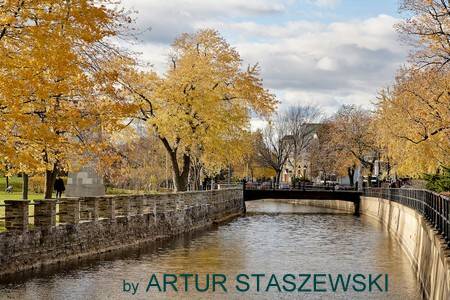 sacred
meaning to me, and I am not a French Canadian or even a Catholic.
sacred
meaning to me, and I am not a French Canadian or even a Catholic.
Then there is
the obvious: the unique linguistic and cultural mixture that
is Montreal. Many cities in America are multi-ethnic, and
there are even unique differences in the mixture of those
ethnicities depending on the city. So, to give a couple of
examples: New York has many cultures but there are very high
numbers of Puerto Ricans and Dominicans; while Chicago has
a preponderance of eastern Europeans. But in neither of those
cities is there a permanent duality of language that persists
over centuries that exists in Montreal between the French
and English languages and their respective populations. Montreal
not only has a preponderance of North Africans and Haitians,
but all immigrants arrive in a place where attaching to the
local identity is at times complex and confusing because there
appear to be two main languages and consequent national identities
to attach thereto. In one sense, this is a problem for national
cohesion – adding a kind of ‘extra step’
of confusion for newly arrived people who almost always genuinely
want to attach and acculturate themselves to their new country.
On the other hand, it also leads to a cosmopolitan uniqueness
not found elsewhere, in the large cities of America at least.
It also leads to the citizenry being simultaneously proudly
cosmopolitan (world oriented), Canadian, and Québécois.
And yes, I listed those in order of (what I believe) importance
to most Montrealers. Though I can easily imagine many switching
the order to put Québécois in front of Canadian,
and at times I probably would put them in that order too.
But there is no doubt that most Montrealers would see themselves
first and foremost as cosmopolitan, and world oriented citizens
of the great city of Montreal.
So in the end,
I return to where I started: the deep attachment I have to
my city. My mother arrived in and grew up in the city’s
former incarnation while my Montreal has been mostly the redefined
city that we all know and love. Both versions of Montreal
were cosmopolitan in their own way: the former, while constrained
internationally mostly within the confines of the British
Empire, was in fact very interesting mixture of French Canada,
English Canada, and some religious variation as well –
Protestant and Catholic, but also with an important significant
Jewish population, which my family formed a part of. The more
modern city is cosmopolitan in a wider sense: Canada now has
its own flag, and a mostly ‘origin blind’ immigration
policy, though language forms a part of that, and part of
the re-orientation of Quebec has been to get almost complete
control over the selection of immigrants, which has led us
to the preponderance of the nationalities mentioned above
(Haitian, North and Sub-Saharan African) since those are places
where French is commonly spoken. But this tectonic plate shift
was not the first that my beautiful city went through, nor
will it be the last.
Long live Montreal!
LIKEVILLE PODCAST: JOHN
HAMER INTERVIEWS JASON MCDONALD